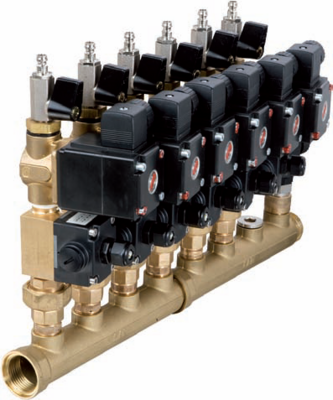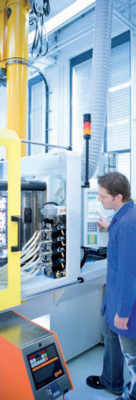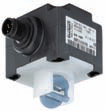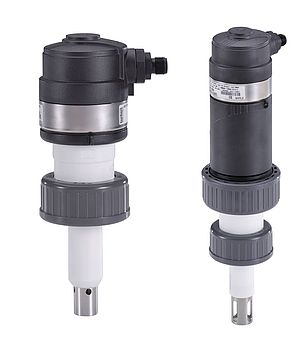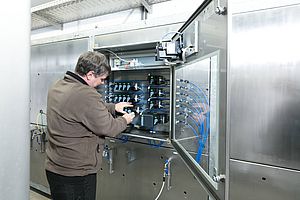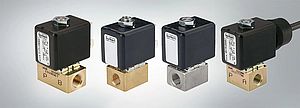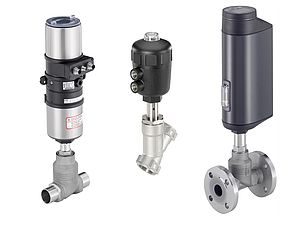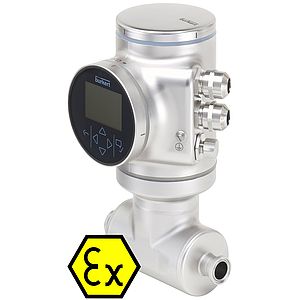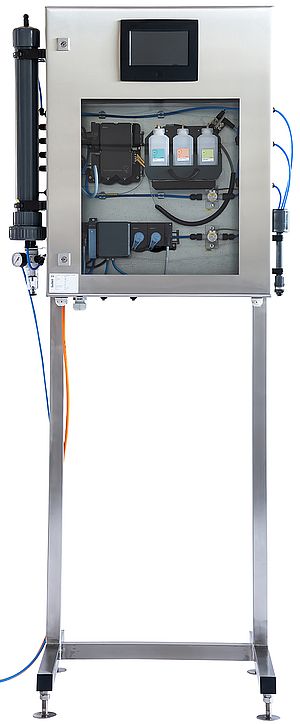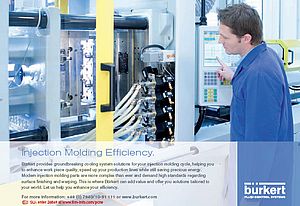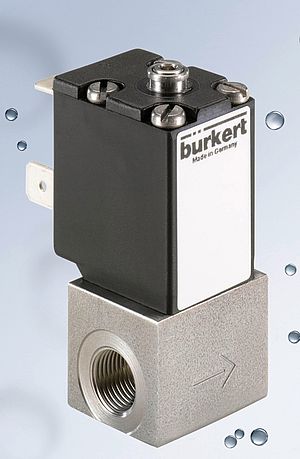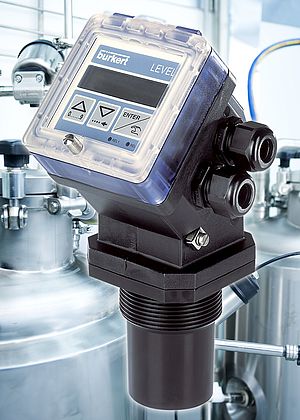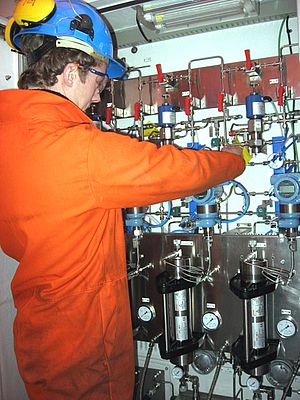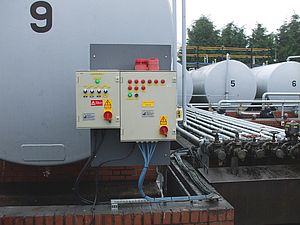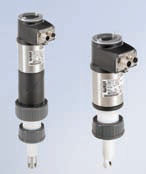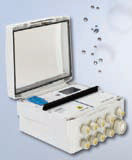Three challenges have to be faced in injection moulding: seamless surface, shorter injection cycles, and a high degree of moulding accuracy. They require a special elaborate cooling technology for injection moulding tools. One of them is the vario-thermal temperature control.
Meeting the increasing requirements concerning surface quality and moulding accuracy represents a challenge in injection moulding. Non-tension and non-deforming work pieces are demanded—featuring a high degree of moulding accuracy and a seamless surface. Innovation is mainly driven by automotive and consumer goods industry. Products like headlamp housings or flat-screen televisions require a very neat-looking surface. Flow irregularities or seams need to be avoided. Apart from surface quality and moulding accuracy, the efficiency of the injection moulding process plays a central role. 70 per cent of the production time is taken up by the cooling time of the moulded part. Speeding up the cooling could lead to a more efficient production.
These three challenges— seamless surface, shorter injection cycles, and a high degree of moulding accuracy—require a special elaborate cooling technology for injection moulding tools. One of them is the vario-thermal temperature control.
Vario-thermal temperature control of tools
Vario-thermal temperature control means that the mould temperature is not constantly the same, but is controlled according to a defined temperature profile during one injection cycle. At the point of injections the temperature is nearly as high as the injected material. Directly after injecting the mould is cooled down rapidly to achieve a fast solidification of the mass. With this technology it is possible to produce plastic parts with high-glossy surface without any flow lines, and no deforming. There are many more technologies to achieve a vario-thermal temperature control, as, for instance, with two cooling loops (steam/water or oil/oil), inductive heating in combination with liquid cooling, infrared heating in combination with liquid cooling or electro-thermal heating with heating elements in combination with liquid cooling. Important with regard to a fast heating up shortly before injections and a fast cooling down until complete solidification as well as short cycle times, are the CPH technology or temperature control with two cycles.
The injection moulding tool first is pre-heated with saturated steam and then specifically watercooled down to demoulding temperature. Implementation of such a dynamic process requires a temperature channelling that is close to the mould’s outlines, to guarantee quick heating-up and cooling-down. The fact that different zones within the work piece conduct heat in different ways because of diverging wall thicknesses has also to be taken into account. The more cooling channels run through the mould and the closer they are to the cavity, the more precisely the cooling process can be tuned and regulated. As a precondition every cooling channel needs its own temperature control. Depending on its complexity, up to 15 channels may run through the mould. For smaller tools, the channels are situated 1.5 mm below the cavity. Big moulds are built in two halves and equipped with milled temperature control channels that follow the outlines of the tool.
Cavity-close temperature control
Vario-thermal temperature control is partially contradictory to the demand for short cycle times. But this conflict can be resolved by new tooling technologies like the „Segmented Tool Temperature Control or Lasercusing. With these technologies cooling channels are lead very close to the moulds cavity. Thus it is possible to implement three dimensional channel structures within the mould und thereby achieve an ideal configuration of the cooling channels.
Accurate temperature control is essential in injection moulding. It depends on the mean temperature of the mould wall inside the injection mould’s cavity. Temperature control can be accomplished inside the mould near the cavity or by measuring the cooling fluid’s temperature in the return line. Thermocouples or resistance thermometers like PT 100 are generally used as sensors. They measure current temperatures and transmit this information to a controller unit that regulates the coolant flow for every single channel. Regulation means alternatively injecting steam for heating, or water for cooling. This type of demand-actuated cooling significantly improves surface quality and considerably reduces cycle times.
Innovative valve technology
The new development of proportional solenoid valves enabled the implementation of multi-loop parallel-working temperature regulation circuits. The advantage of these valves lies in the frictionless bearing of the magnetic core ensured by special form springs that avoid stick-slip effects. This is reflected in an excellent performance record comprising paramount response sensitivity (0.1 per cent of the final value), minimal reversal errors and an excellent regulation performance. The measuring range of the new solenoid valves is 1:100, which makes it possible to adjust to even the slightest shift in temperature by very precise corrective moves of the valves.
The decisive pilot value is the return temperature and flow of effluent water which provides for measuring the cooling process of the work piece. It helps adjust the quantity of affluent cooling liquid in an absolutely reliable and accurate way. ”Return temperature has to be measured for every single cooling channel, which makes it necessary to have a valve and a sensor in each conduct,” explains Dr. Egon Hüfner, process engineer at Bürkert Fluid Control Systems. “In order to improve the dynamics of temperature regulation it is also essential to control flow rate and flow temperature,” he adds. State-of-the-art sensors detect flow changes within 100 to 300 milliseconds and control valves adjust the flow rate within 0.3 to 1 seconds. Impeller sensors particularly qualify for deployment because of their small frame size and excellent response time.
Actuator engineering
The choice of the valves depends on the flow rate and the degree of contamination of the cooling fluid. “With high flow rates and dirty liquids, direct- acting valves are recommendable. Up to 180° Celsius, pneumatically operated on/off or regulating valves are appropriate,” says Dr. Hüfner. On/off temperature control or impulse cooling in the cooling phase of an injection moulding cycle is applicable if valve opening times are steered according to the dissipated amount of heat.
With low flow rates and very clean cooling fluids, i.e. if there is a central water treatment unit involved, and with water temperatures below 90 ° Celsius, servo-assisted electromagnetic valves are perfect. In spite of a small bleed hole they provide nominal diameters of up to 20 mm. The latest On/Off valve generation of Bürkert’s valve technology even manages without bleed holes in the diaphragm and therefore is less sensible to polluted cooling fluids.
With multiple-channel temperature control that involves more or less cooling, depending on the nature of the work piece, pneumatic regulating valves, direct-acting or servo-assisted, provide a clear advantage. Their fracture opening can be swiftly regulated to any value between 0 and 100 per cent. That way dynamic regulating valve technology permits the use of temperature profiles that are pre-programmed and tailored to the work piece. Swift temperature regulation preserves the valve and enhances its durability. With pneumatically operated valves, nominal diameters are not limited by fluid pressure. Normally it ranges from 4 to 20mm or even higher. “To adjust a particular fracture opening, a supplementary electronic control is necessary. With proportional solenoid valves this is done by pulse with modulation (PWM). With normal process valves this is executed by a positioner that is assisted by an integrated valve position control. It adjusts the piston of the process valve to a particular fracture opening.
Decentralised temperature control
The usual integrated flow system consists of a flow sensor (paddle wheel or ultrasonic principle) a proportional valve and a flow rate controller with cascaded temperature control that can be combined with various valve types. The controller plays a decisive role within the system as it has to be able to process different sensor signals such as temperature, pressure or flow rate. And it must be capable of addressing pneumatic and electric control systems like universal controller eCONTROL.
Decentralized engineering of moulding temperatures simplifies machine controls, allowing them to focus on their proper tasks. It also facilitates retrofitting. It requires only simple optimisation measures to considerably shorten cooling cycles and significantly optimise work piece quality.
Temperature control for injection moulding tools
Three challenges have to be faced in injection moulding: seamless surface, shorter injection cycles, and a high degree of moulding accuracy.
- by Bürkert Fluid Control Systems
- February 1, 2009
- 806 views


